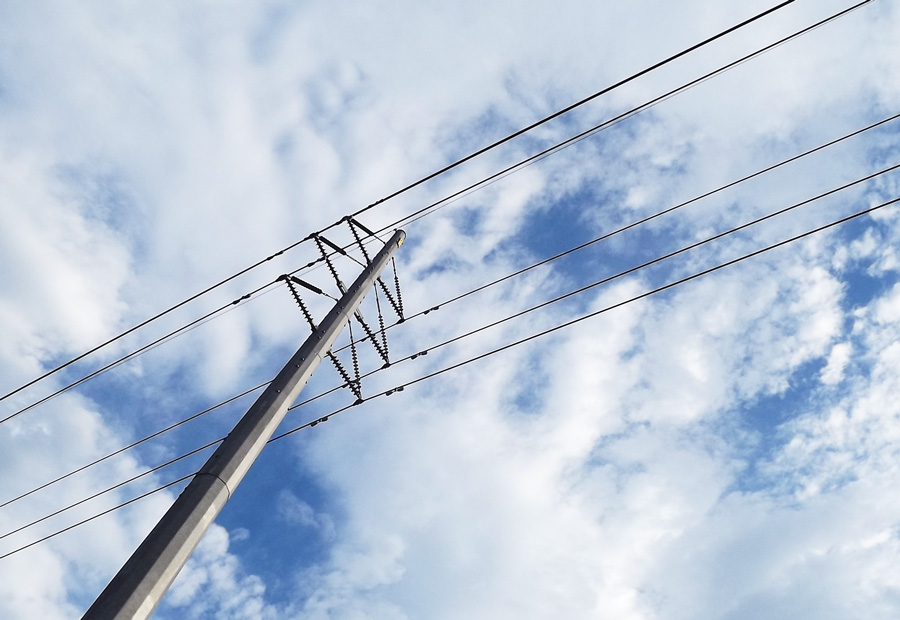New requirements: Vermont utilities must procure 55% of the electricity sold to customers from renewable sources in 2017, increasing to 75% in 2032
The State of Vermont is a recent example of a source of the tornadic nature of change that is coming to the power generation sector and electric utilities across the U.S.
Joining California, Hawaii and New York with the nation’s most aggressive renewable energy goals (50% or more), the Vermont Public Service Board issued an order implementing the Renewable Energy Standard (“RES”), requiring its utilities to buy 75% of their electricity from renewable sources by 2032.

Under its RES, Vermont electric utilities are required to procure an increasing share of the electricity their customers consume from renewable sources. In addition, the RES creates a first-in-the-nation program that allows utilities to meet their renewable portfolio requirements by investing in “energy transformation” projects that reduce their customers’ use of fossil fuels.
The RES requires Vermont utilities to procure 55% of the electricity sold to customers from renewable sources in 2017, increasing gradually to 75% in 2032. Of these amounts, at least l% must come from new, distributed renewable generators, such as net-metering systems, rising to 10% by 2032.
The RES also establishes an energy transformation category under which utilities can either invest in projects that directly reduce the fossil-fuel consumption of their customers, through measures like weatherization, the installation of cold-climate heat pumps, or clean vehicle technologies, or procure additional distributed renewable generation. To meet the requirements of this category, utilities must demonstrate fossil-fuel savings equivalent to 2% of their annual retail sales or procure an equal amount of additional renewable generation. This amount will increase to 12% by 2032.
The implementation of the RES comes in response to Act 56 of 2015, in which the legislature directed the board to issue an order implementing the RES to take effect on January 1,2017. Under Act 56, the order will be followed by a rule making in 2017 and 2018.
The order being issued today details the process for utilities to use in demonstrating their ownership of renewable energy, as well as the types of renewable generation that may be used to meet their obligations. The order also addresses the standards utilities must follow in developing energy transformation projects, including how to document fossil fuel reductions and ensure coordination with other state energy efficiency programs.
The full order for the Vermont RES may be read here. Enforcement begins Jan. 1, 2017.
Renewable Energy Standards: Where do other States Stand?
The table below was compiled by the National Conference of State Legislatures and updated March 23, 2016:
| State | Requirement | Details | Enabling Statute, Code or Order |
| Alaska | In the 2009-2010 legislative session, the Alaska legislature enacted House Bill 306 with the goal that “the state receive 50 percent of its electrical generation from renewable energy sources by 2025.” This language does not appear in codified statutes. | ||
| Arizona | 15% by 2025 | Distributed Generation: 30% of annual requirement in 2012 and thereafter.
The state has several credit multipliers for different technologies. |
Ariz. Admin. Code §14-2-1801 et seq. |
| California | 33% by 2020
40% by 2024 45% by 2027 50% by 2030 |
2013 amendment allows the California Public Utilities Commission to adopt additional requirements. | Cal. Public Utilities Code §399.11 et seq.;
Cal. Public Resources Code §25740 et seq.; CA A 327 (2013) CA S 350 (2015) |
| Colorado | 30% by 2020 (IOUs)
10% or 20% for municipalities and electric cooperatives, depending on size |
Distributed Generation: 3% of IOU retail sales by 2020, 1% of cooperative retail sales by 2020 (for those providing service to 10,000 or more meters) or 0.75% of cooperative retail sales by 2020 (for those providing service to less than 10,000 meters).
The state has several credit multipliers for different technologies. |
Colo. Rev. Stat. §40-2-124;
CO S 252 (2013) |
| Connecticut | 27% by 2020 | Class I renewable energy sources (including distributed generation): 20% by 2020.
Class I or II (biomass, waste-to-energy and certain hydropower projects): 3% by 2010. Class III (combined heat and power, waste heat recovery and conservation): 4% by 2010. |
Conn. Gen. Stat. §16-245a et seq.; |
| Delaware | 25% by 2025-2026 | Photovoltaics: 3.5% requirement by 2025-2026.
The state has multiple credit multipliers that apply to different technologies. |
Del. Code Ann. 26 §351 et seq. |
| Hawaii | 30% by 2020
40% by 2030 70% by 2040 100% by 2045 |
Hawaii Rev. Stat. §269-91 et seq.
House Bill 623 (2015) |
|
| Illinois | 25% by 2025-2026 | Distributed Generation: 1% of annual requirement beginning in 2015 for IOUs.
Wind: 75% of annual requirement for IOUs, 60% of annual requirement for alternative retail electric suppliers. |
Ill. Rev. Stat. ch. 20 §688 (2001); |
| Indiana | 10% by 2025 | 30% of the goal may be met with clean coal technology, nuclear energy, combined heat and power systems, natural gas that displaces electricity from coal and other alternative fuels. | Ind. Code §8-1-37 |
| Iowa | 105 MW of generating capacity for IOUs | Iowa Code §476.41 et seq. | |
| Kansas | 15% by 2015-2019
20% by 2020 |
20% requirement for peak demand capacity. | Kan Stat. Ann. §66-1256 et seq. |
| Maine | 40% by 2017 | Includes a 10% requirement by 2017 for Class I (new) sources.
The state also has separate goals for wind energy: 2,000 MW of installed capacity by 2015; 3,000 MW of installed capacity by 2020, including offshore or coastal; and 8,000 MW of installed capacity by 2030, including 5,000 MW from offshore and coastal. The state has a credit multiplier for community-based renewable energy. |
Me. Rev. Stat. Ann. 35-A §3210 et seq.;
Me. Rev. Stat. Ann. 35-A §3401 et seq. (wind energy) |
| Maryland | 20% by 2022 | Solar: 2% by 2020.
Offshore wind: 2.5% maximum by 2017. |
Md. Public Utilities Code Ann. §7-701 et seq. |
| Massachusetts | Class I: 15% by 2020 and an additional 1% each year after Class II: 5.5% by 2015 |
Photovoltaic: 400 MW required.
Class I resources are new sources. Class II (resources in operation by 1997) requirement includes 3.6% renewable energy and 3.5% waste-to-energy. |
Mass. Gen. Laws Ann. ch. 25A §11F |
| Michigan | 10% by 2015
DTE Electric: 600 MW by 2015 |
The state’s largest two utilities have additional requirements beyond the 10% statewide requirement.
The state has several credit multipliers for different technologies. |
Mich. Comp. Laws §460.1001 et seq. |
| Minnesota | 26.5% by 2025 (IOUs)
25% by 2025 (other utilities) |
Xcel Energy has a separate requirement of 31.5% by 2020.
Solar: 1.5% by 2020 (other IOUs); Statewide goal of 10% by 2030. |
Minn. Stat. §216B.1691 |
| Missouri | 15% by 2021 (IOUs) | Solar-Electric: 2% carve-out. | Mo. Rev. Stat. §393.1020 |
| Montana | 15% by 2015 | Mont. Code Ann. §69-3-2001 et seq. | |
| Nevada | 25% by 2025 | Solar: 5% of annual requirement through 2015, 6% for 2016-2025.
The state has a credit multiplier for photovoltaics and on peak energy savings. |
Nev. Rev. Stat. §704.7801 et seq. |
| New Hampshire | 24.8% by 2025 | Solar: 0.3% by 2014.
Requires at least 15% of requirement to be met with new renewables. |
N.H. Rev. Stat. Ann. §362-F |
| New Jersey | 24.5% by 2020 | 20.38% Class I or Class II (resource recovery or hydropower) renewables by 2020-2021.
4.1% solar-electric by 2027-2028. Offshore wind: 1,100 MW. |
N.J. Rev. Stat. §48:3-49 et seq. |
| New Mexico | 20% by 2020 (IOUs)
10% by 2020 (co-ops) |
Solar: 20% by 2020 (IOUs). Wind: 30% by 2020 (IOUs). Other renewables including geothermal, biomass and certain hydro facilities: 5% by 2020 (IOUs). Distributed Generation: 3% by 2020 (IOUs).The state has a credit multiplier for solar energy that was operational before 2012. |
N.M. Stat. Ann. §62-15; |
| New York | 29% by 2015;
50% by 2030 (REV- currently in process) |
Distributed Generation: 8.4% of annual incremental requirement. | NY PSC Order Case 03-E-0188; |
| North Carolina | 12.5% by 2021 (IOUs)
10% by 2018 (munis and coops) |
Solar: 0.2% by 2018. Swine Waste: 0.2% by 2018. Poultry Waste: 900,000 MWh by 2015.The state offers credit multipliers for biomass facilities located in cleanfields renewable energy demonstration parks. |
N.C. Gen. Stat. §62-133.8 |
| North Dakota | 10% by 2015 | N.D. Cent. Code §49-02-24 et seq. | |
| Ohio | 25% by 2026
Senate Bill 310(2014) creates a two-year freeze on the state’s standard while a panel studies the costs and benefits of the requirement. |
12.5% Renewable Energy Resources. 12.5% Advanced Energy Resources (advanced energy resources includes co-generation, advanced nuclear power and clean coal).Solar: 0.5%. |
Ohio Rev. Code Ann. §4928.64 et seq. |
| Oklahoma | 15% by 2015 | Okla. Stat. tit. 17 §801.1 et seq. | |
| Oregon | 25% by 2025 (utilities with 3% or more of the state’s load)
10% by 2025 (utilities with 1.5% – 3% of the state’s load) 5% by 2025 (utilities with less than 1.5% of the state’s load) |
Photovoltaics: 20 MW by 2020 (IOUs).
The state has a credit multiplier for photovoltaics installed before 2016. |
Or. Rev. Stat. §469a |
| Pennsylvania | 18% by 2020-2021 | Tier I: 8% by 2020-2021 (includes photovoltaic). Tier II (includes waste coal, distributed generation, large-scale hydropower and municipal solid waste, among other technologies): 10% by 2020-2021. Photovoltaic: 0.5% by 2020-2021. |
Pa. Cons. Stat. tit. 66 §2814 |
| Rhode Island | 14.5% by 2019 | The state has a separate long-term contracting standard for renewable energy, which requires electric distribution companies to establish long-term contracts with new renewable energy facilities. | R.I. Gen. Laws §39-26-1 et seq.;
R.I. Gen. Laws §39-26.1 et seq. (contracting standard) |
| South Carolina | 2% by 2021 | Systems less than 1 MW: 1% of aggregate generation capacity, including at least .25% of total generation from systems less than 20kW.
1 – 10 MW facilities: 1% of aggregate generation capacity. |
House Bill 1189 |
| South Dakota | 10% by 2015 | S.D. Codified Laws Ann. §49-34A-94; | |
| Texas | 5,880 MW by 2015
10,000 MW by 2025 (goal; acheived) |
Non-wind: 500 MW (goal). | Tex. Utilities Code Ann. §39.904 |
| Utah | 20% by 2025 | Utah Code Ann. §54-17-101 et seq.; | |
| Vermont | 55% by 2017
75% by 2032 |
Distributed Generation: 10% by 2032.
Energy Transformation: 12% by 2032 (includes weatherization, thermal energy efficiency and heat pumps). |
Vt. Stat. Ann. tit. 30 §8001 et seq.; |
| Virginia | 12% by 2022 (IOUs)
15% by 2025 (IOUs) |
The state has several credit multipliers for different technologies. | Va. Code §56-585.2 |
| Washington | 9% by 2016
15% by 2020 |
Standard is applicable to all utilities that serve more than 25,000 customers.
Requirement also includes all cost-effective conservation. The state has a credit multiplier for distributed generation. |
Wash. Rev. Code §19.285; |
| West Virginia | 10% from 2015-2019
15% from 2020-2024 25% by 2025 |
Goal is applicable to IOUs that serve more than 30,000 residential customers.
Goal includes alternative energy sources, including coal technology, coal bed methane, natural gas, combined cycle technologies, waste coal and pumped storage hydroelectric projects. |
W. Va. Code §24-2F; |
| Wisconsin | 10% by 2015 | Standard varies by utility:
2011-2014: utilities may not decrease its renewable energy percentage below 2010 percentages. 2015: utilities must increase renewable energy percentages by at least 6% above their 2001-2003 average. Utilities may not decrease their renewable energy percentage after 2015. |
Wisc. Stat. §196.378 |
| Washington, D.C. | 20% by 2020 | Solar: 2.5% by 2023. | D.C. Code §34-1431 et seq. |
| Guam | 25% by 2035 | Goal applies to net electricity sales. | Guam Public Law §29-62 |
| Northern Mariana Islands | 20% by 2016 | Requirement applies to net electricity sales.
Requirement allows for non-compliance if it is not cost-effective. |
N. M. I. Public Law §15-23
House Bill 165 (2014) |
| Puerto Rico | 20% by 2035 | Requirement does not take effect until 2015. | PR S 1519 (2010);
PR H 2610 (2010) |
| U.S. Virgin Islands | 20% by 2015 25% by 2020 30% by 2025; up to 51% after 2025 | Standard applies to peak demand generating capacity.
Standard will increase until a majority of capacity is from renewable or alternative energy. |
VI B 9 (2009) |
Sources:
Database of State Incentives for Renewables and Efficiency, Renewable Portfolio Standards. (Raleigh, N.C. State University, 2016).
Lawrence Berkeley National Laboratory.
National Conference of State Legislatures.







